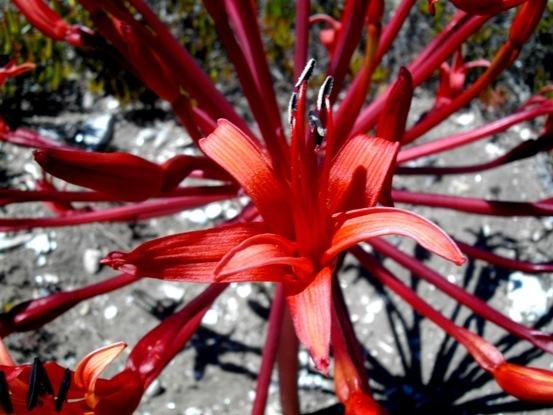Brunsvigia orientalis flower

Author: Ivan Lätti
Photographer: Thabo Maphisa
Inspection of the single flower of Brunsvigia orientalis reveals the longitudinal parallel lines on the red tepals. The flower structure is similar to the conventional lily flower shape: Six tepals with recurving tips form the funnel, while a bunch of six stamens protrudes from the flower centre around the style. The irregular, zygomorphic flower shape, typical of those Brunsvigia species that grow lax umbels, deviates from the classical lily shape, by having tepals that do not radiate symmetrically from the flower centre.
The black anthers are presented in this picture at various heights by the filaments. There are Brunsvigia species with stamens of equal length. B. orientalis is a member of the unequal stamen group in the genus. The style can just be discerned here, hiding among the stamens. The furrowed pedicel tip is seen to become swollen at the flower base, widening into the ovary that will grow still bigger when pollination is done and the flower fades (www.plantzafrica.com).

